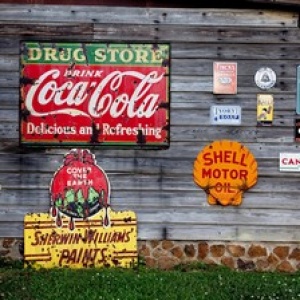
How important is branding to your organisation? Have you helped test and develop brand values, authenticity and positioning? Then invested in brand tracking, to ensure everyone in the organisation lives up to those values, with a consistent image and level of service that matches your brand promise?
Most Insight teams are involved in this kind of activity – but what about their own brand?
What does the marketing and branding of your Insight team within your organisation say about you?
Just as you need marketing and branding to build and retain a distinctive positioning space in consumers’ minds, you also need to think about how Insight is seen within your organisation. Effectively, you have a B2B marketing role to do within your company.
Do you have a distinctive place and role in the minds of your stakeholders? Are you the ‘go-to’ team for Insight? If not, how secure are you? With the pace of change and reorganisation everywhere, no team can take their position and future role for granted.
Taking time out as a team to consider your branding and positioning could be time well spent.
If you are a ‘one person band’, you are the face of Insight for your organisation. As your team grows, the face of Insight for each stakeholder is the person they primarily deal with.
As an Insight leader, you will probably recruit a team with a range of skills and specialisms, rather than clones of yourself, which is healthy for developing multi-sourced Insight. But with different strengths, weaknesses and aptitudes across your team, your outputs and interactions may not be consistent or coherent. And that goes against all marketing principles of consistent branding.
It’s important to develop your Insight brand and think about how you want to convey it – then do so consistently.
Byron Sharp, in his book ‘How brands grow’, says that “distinctive assets make it easier for consumers to notice, recognise, recall and buy the brand”. You are not competing quite like a product brand in a supermarket, but the principles still apply if you want your team to be the ‘go-to’ team for Insight.
The starting point is to determine your brand values. What do you stand for? What are you proud of? What do you want to be famous for? What is distinctive about your team?
Here are our top tips for establishing your Insight brand.
Get the whole team involved
Your brand values - this makes a great topic for a team ideas session. You might start with your technical expertise, and your independent view, representing the voice of the customer. Consider how you work and how you want stakeholders to work with you, covering your inter-personal skills and business skills. Take it through to the impact you have, or want to have, on the organisation, and the value you can add.
You will probably elicit a whole range of potential brand values, and will need to prioritise and refine them, to identify your key Insight brand values and assets.
It’s important to follow through on this to ensure that everyone in your team lives and breathes your brand values, with their ways of working, their outputs and their behaviours.
Define your visual identity
To create a consistent visual identity, it’s well worth investing in a set of templates that everyone can use, with standard colours, layouts, fonts and structures. Then each piece of work will visually help to reinforce the image you want to project.
Should you go as far as creating and using your own Insight logo? Some teams successfully do this, and add it as a footnote to all slides, documents and emails, while others say internal logos are discouraged. If this is the case you for you, it might be more appropriate to align with your organisation’s visual branding.
Be the change you want to see
It’s really important to focus on how you work with stakeholders, as well as on the specific outputs, so that the customer experience also lives up to your brand values.
Ways of working and behaviours are best tackled by highlighting what good looks like, being a good role model, and adding key aspects to job descriptions and appraisals. If you can implement this promptly after developing your brand values in your workshop, that momentum will help get everyone focused and on board.
So take a little time out to bring your team together and establish your Insight brand values and assets, and practise what you preach to your marketing colleagues.
Free Insight Benchmarking now available
How does your Insight positioning and capability compare to Barclays, eBay, M&S, British Gas and Molson Coors? If you lead a client-side Insight team, please contact us for information about our Free Insight Benchmarking service.
